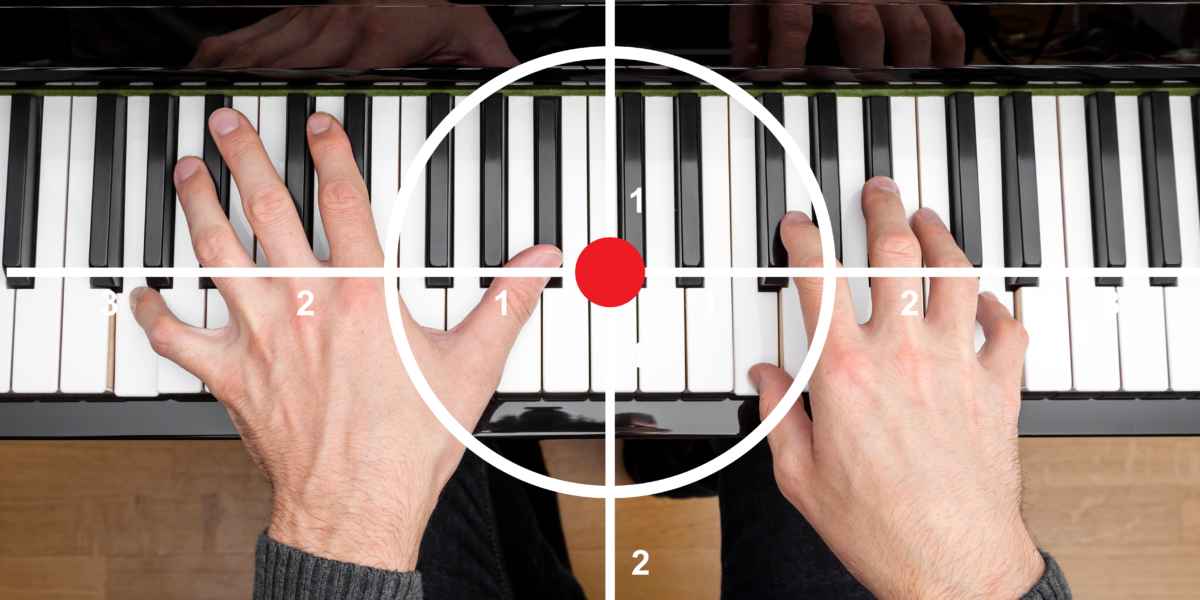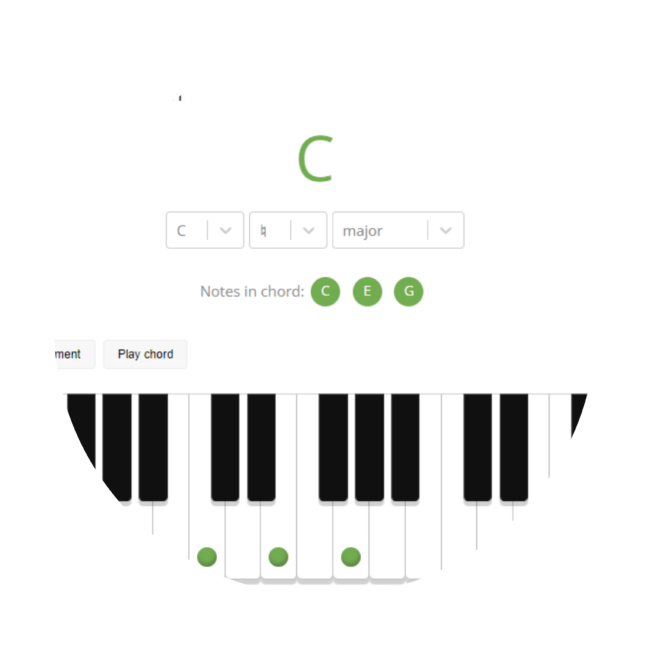The 3 Best Piano Chord Finder Websites of 2022

What is a piano chord finder? How does it work? Find out all the answers in this article and discover the best chord finder websites of 2022.
There are structures, methods, and techniques for practicing and learning music. The best musicians claim they learned their craft from exploring, experimenting, and improvising. Some of them never even learned music theory. All of their art was born from a deep, playful relationship with the instrument.
The most useful tools help us connect our exploration with the language of musical knowledge. This is where the piano chord finder comes in. You can freely combine notes and then figure out the official names for your combinations and creations. Knowing this terminology makes it easier to communicate our ideas with other musicians.
In this article, we’ll explain what a piano chord finder is, how it works, and recommend some of the best chord finder websites around today.
What is a piano chord finder?
Almost every combination of notes has a chord name that binds them together. Some of these names are very simple. For example, C, E, G, and B would be called Cmaj7. Other combinations of notes are more obscure, like F, G, Bb, C, or Fsus4(add9).
Another complicating factor is some combinations of notes having multiple names, depending on the order of notes in the chord and context of the song. For example, the four notes of Cmaj7 could also be called Em6, and the notes of Fsus4(add9) could also be called Bbsus2(add6).
A chord finder is a website that tells you all the possible chord names for any combination of notes. The services are usually free and easy to use – just input the notes, and the system shows all the chord name options.
How does it work?
Let us paint you a little picture.
You’re sitting at home next to your piano and lay your hands on the keys without looking at the notes. There’s an unusual sound. After playing it a few times and experimenting with notes, you want to remember this chord for the next time–does this musical creature have a name?
You go to the computer and search for “chord finder.” You find this article. Then you go to the list below of the best chord finders and click on one of the links.
You look back at your piano, and one note at a time, you see if you can name all the notes in this chord you’ve discovered. The chord finder on the screen usually has a few options for inputting the notes: either on a virtual fretboard, a virtual keyboard, or by simply selecting the names of the notes from a drop-down list. Press “process,” “go,” or “find my chord” and receive a list of all chord names.
Let’s take a look at an example.
I was playing on my piano, and my fingers found their way to the notes A, C#, E, and F#. I typed them into the chord finder, giving me the list. These four notes could be called A6; with a different bass note, it could function as F#m7; in a rarer context, you could even use these notes as a C#m(add4)b6.
Make sure you always listen carefully to the chord in all its variations. Ultimately, we use our ears to play music and must train them well. For some tips, check out Ear Training for Beginners.
Recommended piano chord finders.
A clear and concise website, which is very beginner friendly. When you select the note names from the keyboard image, it gives you options to specify. For example, you chose the note Eb – would you like to call it Eb or D#? This will affect the chord’s name, so it’s good to be clear. Once you’ve specified all the note names, it gives you an option to choose the root or bass note of the chord.
In the end, the list is very precise and comprehensive. After it shows you the names of the chords, it also describes the process for figuring out the chord so that you can do it yourself next time.
This website calls a chord finder a “chord identifier” or a “reverse chord finder.” But it’s precisely like the chord finder we described to you.
You choose the notes from an image of a piano or a guitar fretboard. Then, you click “find these notes,” and it takes you to a page with all the different name options for that collection of notes.
It’s a little less easy on the eyes. The graphics are convoluted and small. But the list is very precise and detailed – great if you want to understand how chord names are figured out.
This is a reverse chord finder. It’s for a situation where you know the chord’s name but not the notes to play. Here’s how it works: inputting the chord’s name shows you which notes to play. You choose the key (for example, B), the symbol (for example, flat), and then the chord type (for example, minor7). You can choose your instrument: guitar, piano, ukelele, or music notation. Green dots appear on the instrument diagram to show you which notes to play to make the chord of your choice. It’s well set out and easy to use – perfect for sitting in front of a chord chart and seeing a chord name you don’t recognize.
Playing the piano is not an easy undertaking. We have to use all the resources at our disposal to learn the practice’s ins and outs. Take advantage of your chord finders to learn more about harmony, and of course, download the Simply Piano app for interactive and step-by-step guidance in your piano playing.












